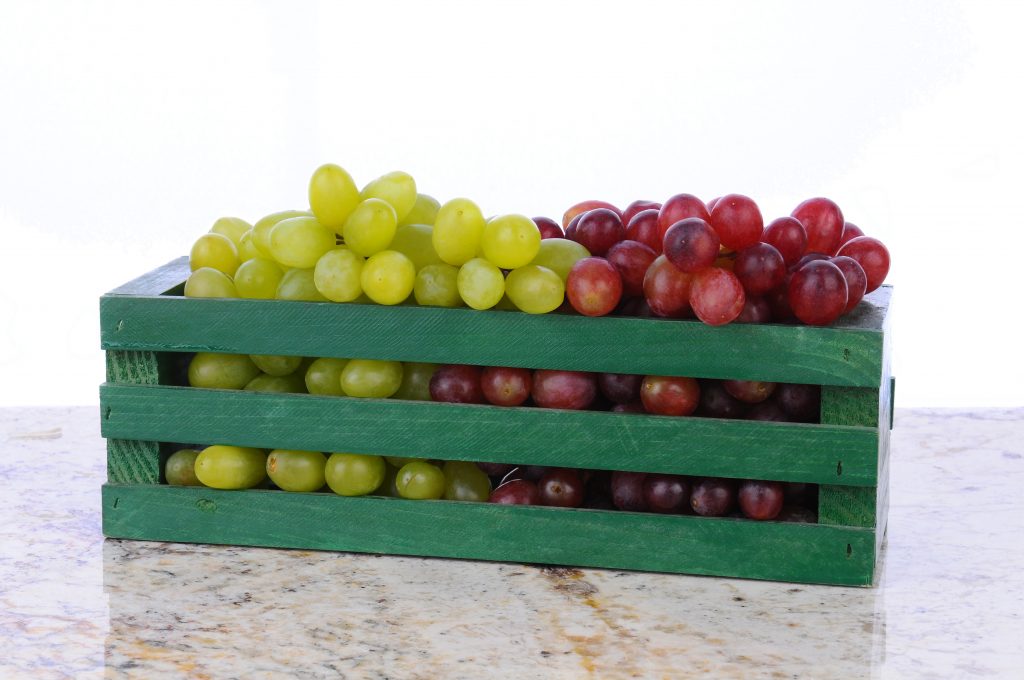San Joaquin Valley table grape season off to good start amid strong demand

Ever-popular and ever-important fruit for the U.S., premium California table grapes are in the swing of harvest for 2020.
With fruit coming off of the vine a bit faster than previous seasons and following slightly lower volumes in the Coachella Valley, the industry is looking at what it considers a new-normal volume for 2020.
The two major grape-producing regions of the state, the Coachella and San Joaquin Valleys produce 99% of the nation’s commercially grown table grapes.
President of the California Table Grape Commission, Kathleen Nave, sat down to speak with us about the outlook for this season and how the industry is commercializing its fruit amid new challenges.
The kickoff of harvesting in the major producing region - the San Joaquin Valley – has gone “really well” with strong demand, according to Nave. The transition between the Coachella and San Joaquin Valleys was smooth with the demand likely a reflection of shorter volumes from the Coachella Valley and Mexico and excellent San Joaquin Valley fruit quality, Nave told us.
The Commission estimates 104.9 million nineteen-pound boxes to be harvested this year. Turns out that the 2020 estimate is the same volume as was harvested in 2019.
“The estimating process is detailed and begins anew each time the crop is estimated,” said Nave. “It’s interesting that despite a lot of changes between 2019 and 2020 the volume remains stable.”
This season there are bound to be a few new table grape varieties, even if their availability doesn’t impact volume all that much in the grander scheme of things. The top 15 varieties harvested in 2019 represented 75% of production, explained Nave.
She noted that there was no reason to expect much of a change in 2020.
“There are over eighty varieties currently in production. Each variety has its own set of characteristics: flavor, size, color hue, shape, and texture and each has its own harvest window.” She reminded us that it’s still quite early in the season, making it hard to say just how many new varieties will be released this year.
Promoting California grapes in the U.S. and around the world
Consumption of California table grapes is mostly in the U.S. market but about 35 percent is shipped to export markets annually.
"The Commission has a very aggressive marketing campaign, promoting in 20 international markets and in the U.S.," Nave said. Consumer advertising, social media outreach, retail and foodservice promotion, nutrition education and media outreach are among the campaign elements.
“Our program has changed a lot because the world in which we are marketing the fruit has changed.”
Movement towards online retail promotion has been a definite shift. What Nave calls “a fast move by retailers into e-commerce” has been spurred by consumers' increased use of online shopping.
While not a new area for anyone, Nave said retailers increased focus on reaching their customers through social media, expanded online promotions, and other e-commerce vehicles have led the Commission to develop new e-commerce promotional opportunities.
Sharing grape consumption ideas with consumers
When asked about how the Commission is promoting grapes with consumers, Nave told us that in some ways, the old has become new again.
“Snacking is at an all-time high and grapes are the perfect snack; beautiful, tasty, convenient, and amazingly good for you as they are full of phytonutrients,” Nave said.
“And, with the increased focus on cooking and eating at home, use of recipes is new again: grapes in sauces, on pizza, roasted with chicken, baked in breads, or used to create salsa – all are very of the moment,” Nave said.
As a majority of California’s table grape crop ships after September 1, reminding consumers that they can enjoy premium table grapes well into fall and winter is a big part of the message the Commission will be sharing as the California season progresses.
Keeping workers safe
As far as how the industry has dealt with the pandemic in the vineyards, harvesting hasn’t yet been impacted although increased training, additional protections for workers, and social distancing guidelines mean increased costs.
Individual growers and shippers have worked hard to take the necessary steps to employees safe, said Nave.
“The table grape industry revolves around a very stable workforce, people who live and work in the communities surrounding the vineyards; people who are valuable, long-term members of table grape farming operations. Keeping them safe is always job one – never more so than during this pandemic.”



































